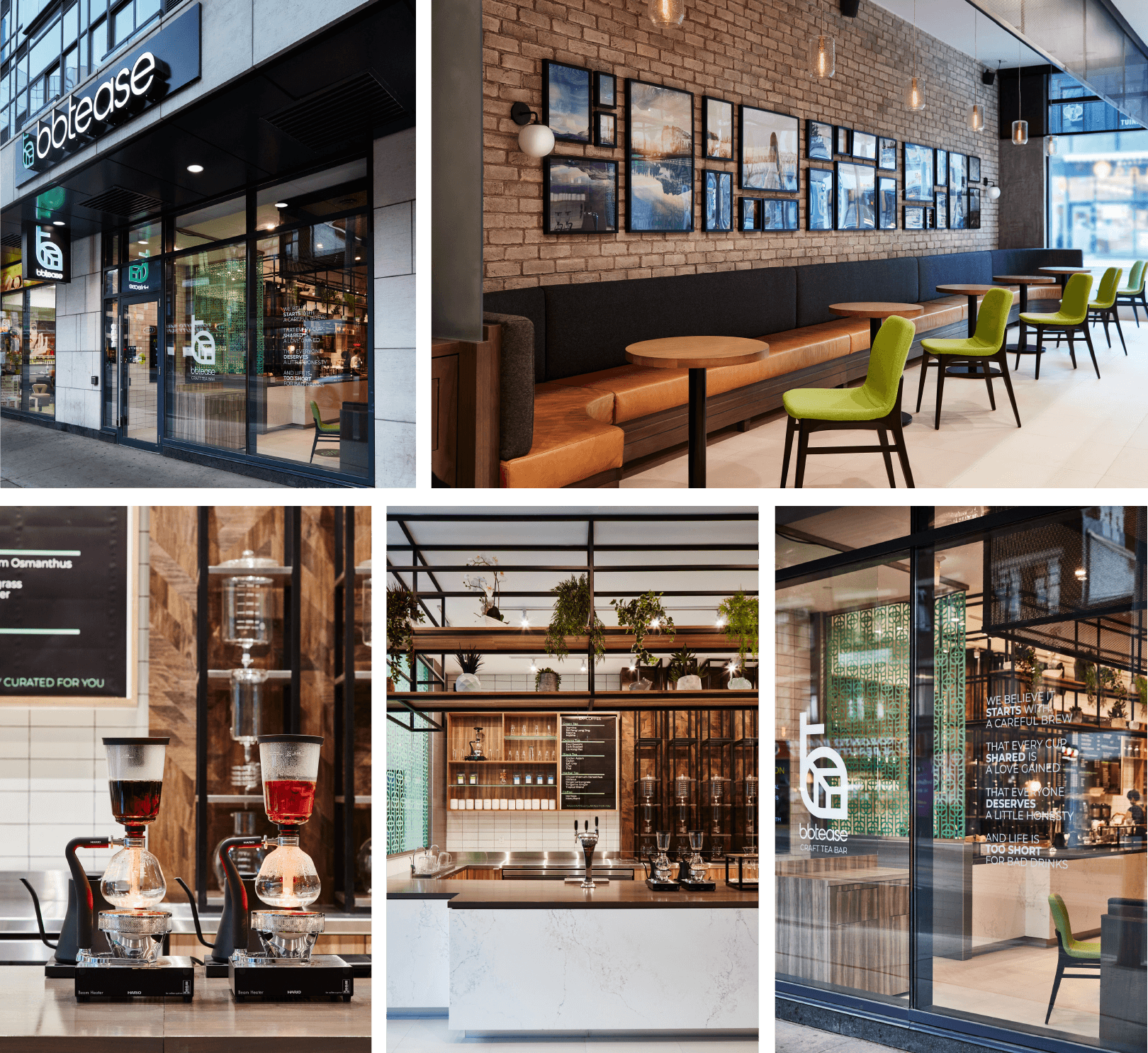Comfort can have different meanings. It can mean physically comfortable, with soft seating and moderate temperature. Or, a person can be mentally comfortable, where a space is calm, safe, and welcoming.
In a retail context, store design can play a large role in making customers feel more at ease. Have you ever walked into a store and then immediately out when you didn’t like its vibe, or felt out of place? Conversely, do some places have a relaxing atmosphere where you feel like you belong? For this reason, some people continue to go to the same café, restaurant, or store for years.
There are many factors that can contribute to feelings of comfort. These influences can be categorized as improving physical comfort, sensory comfort, or social comfort, and will be discussed below.
1. Physical Comfort
The importance of physical comfort can vary depending on your brand strategy and retail type. For example, in a quick-service restaurant, comfort may not be a priority if your focus is on customer turnover and easy cleaning. However, if the goal is to have customers spend more time in your café (and continue to buy products), factors such as comfortable seating and temperature control can make a big difference in how customers feel.
Key things to consider:
- Do your chairs have good back support and cushioning?
- Is there air conditioning and heating? Is the heat pump not heating? Contact an expert to perform a heat pump repair Rochester NY. Install the right AC units with help from commercial air conditioning Sydney.
- Is your environment accessible? Can customers with different bodies and degrees of mobility comfortably sit and move through your space?
- Are ceiling heights, table heights, leg space, doorways, and seating appropriate sizes?
- Do you offer accommodations for customers in wheelchairs or for young children and infants?
A restaurant that is not accommodating to different needs could prevent groups from visiting if it would be physically uncomfortable for one friend or family member to join. On the other hand, if it is inclusive it could become a party’s favorite spot. The same can be said for a retail store: are there places to sit and take a break? Can customers borrow scooters/mobility aids, wheelchairs, or strollers? Are aisle sizes accommodating?
2. Sensory Comfort
Sensory comfort is also an important factor and can be analyzed through the relevant senses of sight, sound, and smell.
Sight: Is your space too overwhelming visually? Too many graphics, colours, digital screens, etc. may be exciting at first but will quickly leave many customers drained and seeking a break from the constant stimuli. Customers will have different sensitivity levels to visually-rich environments, with some seeking them out and others avoiding them. Offering both engaging and relaxing sections in your retail space gives customers a choice to spend time where they feel most comfortable.
Sound: Similarly, customers will vary in their ideal level of noise. Consider a medium volume of music unless you are only catering to one type of customer.
Smell: Of course, you do not want your store or restaurant to smell bad, so ensure garbage and restroom facilities are located appropriately. Too much perfume can also be negative— especially to scent-sensitive customers that may have adverse reactions such as migraines. Giving customers the option to smell perfumed products or avoid them is ideal. In restaurants, food smells can be enticing, but too much can overwhelm some food selections.
Addressing sensory factors is critical to the design process. Making an environment comfortable for the senses will make it a place that customers enjoy spending time in rather than somewhere to avoid or get in and out of as quick as possible. If you’re looking for a well-designed mall space that prioritizes sensory experience, you may be interested in exploring properties like Edgewater Mall by https://jwacompanies.com/property/edgewater-mall/.
3. Social Comfort
Lastly, social comfort is another element to consider, and one that is more difficult to address. It is hard to make everyone feel like they belong, since many brands cater to certain demographics. If you make your store or restaurant inclusive, those that want a more exclusive experience will feel out of place. If you make it exclusive, some people will feel unwelcome. If you have a customer target group, specific décor and service style will help to make them feel like they fit in. For example, some people may appreciate eclectic designs and self-service, while others may prefer classic styles and full-service.
Regardless of your customer type, friendly service will generally be well-received. Encouraging a culture that has a community feel but is welcoming to new members is also a good strategy, since a familiar social environment is appealing to established customers but can be intimidating to newcomers. A retail space where it is comfortable and safe to be yourself, act freely, and go alone or in a group will lead to positive experiences.
If your store has physical, sensory, and social comfort it will be a space in which customers will enjoy spending time and feel more emotionally and rationally connected to your brand. This feeling of connection is likely to lead to loyalty and repeat visits, as well as new customers, and ultimately improve your business. For example, bbtease‘s retail space not only sheds light on craftsmanship but also creates a vibe where customers can enjoy the social aspect of tea drinking.

Image Source: SLD


